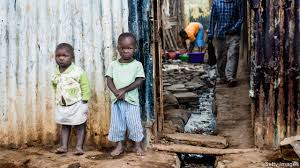NITI Aayog’s Discussion Paper ‘Multidimensional Poverty in India since 2005-06’
As per a new NITI Aayog report, 24.82 crore Indians have risen out of multidimensional poverty in the last 9 years. It states that multidimensional poverty in India reduced from 29.17% in 2013-14 to 11.28% in 2022-23.
Assessing Poverty Beyond Income
The Multidimensional Poverty Index (MPI) measures acute poverty using health, living standards and other factors, unlike monetary measures. The current analysis uses globally recognized Alkire Foster method.
Key Findings of the Report
- India’s MPI poverty rate fell from 29.17% in 2013-14 to 11.28% in 2022-23 – a 17.89 percentage point reduction. Uttar Pradesh saw the most people escaping poverty at 5.94 crore.
- The paper found MPI poverty in India declined at a 10.66% annual rate between 2015-16 and 2019-21, faster than the 2005-2015 rate of 7.69%.
- The analysis reflects major improvements across all 12 key MPI parameters like nutrition, drinking water, sanitation, housing and others.
- With current trends, India looks set to meet the UN’s Sustainable Development Goal on halving multidimensional poverty well before 2030.
- The report credits government initiatives across healthcare, food security, financial inclusion, clean energy and shelter for this upliftment in people’s living conditions.
- While poorer states earlier have posted strong MPI cuts, performance across states is mixed. This helps bridge inter-state disparities.
Criticism of the Analysis
However, experts have challenged the credibility of assumptions and projections used to arrive at the rosy conclusions. They highlight that GDP growth rates during the 2005-2014 and 2014-2022 periods differed considerably.
Dubious COVID-era Projections
The paper utilizes pre-pandemic National Family Health Survey (NFHS) data until 2019/21 and simply extends trends to 2022 and 2023. But the COVID crisis negatively impacted education attendance, health outcomes and implementation of government programs tied to the multidimensional poverty index (MPI) indicators.
Ignoring Pandemic Impacts
Child mortality rose and nutrition levels fell during COVID due to the health emergency. The NITI projections overlook these medium-term setbacks and assume pre-COVID progress continued post-pandemic unaffected.
Fiscal Constraints Add Doubts
Moreover, government spending tightened after COVID, hurting social sector schemes. Despite this, the analysis showcases poverty reduction in UP, Bihar and MP – among states worst hit by the pandemic and funding cuts.
Month: Current Affairs - January, 2024
Category: Reports & Indexes Current Affairs








